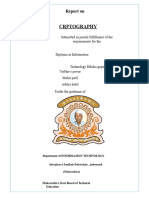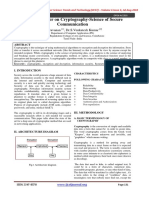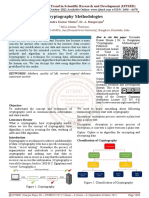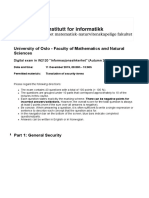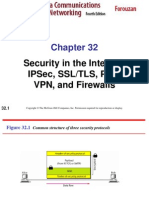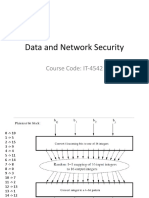0% found this document useful (0 votes)
31 views17 pagesCryptography
Cryptography is a method of securing communication by converting plain text into ciphertext using algorithms to ensure data confidentiality, integrity, authentication, and non-repudiation. It includes various types such as symmetric key cryptography, hash functions, and asymmetric key cryptography, each with distinct applications like secure web browsing, digital currencies, and electronic signatures. The Advanced Encryption Standard (AES) is a widely used encryption algorithm that provides strong data protection through block cipher techniques.
Uploaded by
Vinuta HiremathCopyright
© © All Rights Reserved
We take content rights seriously. If you suspect this is your content, claim it here.
Available Formats
Download as DOCX, PDF, TXT or read online on Scribd
0% found this document useful (0 votes)
31 views17 pagesCryptography
Cryptography is a method of securing communication by converting plain text into ciphertext using algorithms to ensure data confidentiality, integrity, authentication, and non-repudiation. It includes various types such as symmetric key cryptography, hash functions, and asymmetric key cryptography, each with distinct applications like secure web browsing, digital currencies, and electronic signatures. The Advanced Encryption Standard (AES) is a widely used encryption algorithm that provides strong data protection through block cipher techniques.
Uploaded by
Vinuta HiremathCopyright
© © All Rights Reserved
We take content rights seriously. If you suspect this is your content, claim it here.
Available Formats
Download as DOCX, PDF, TXT or read online on Scribd
/ 17













































